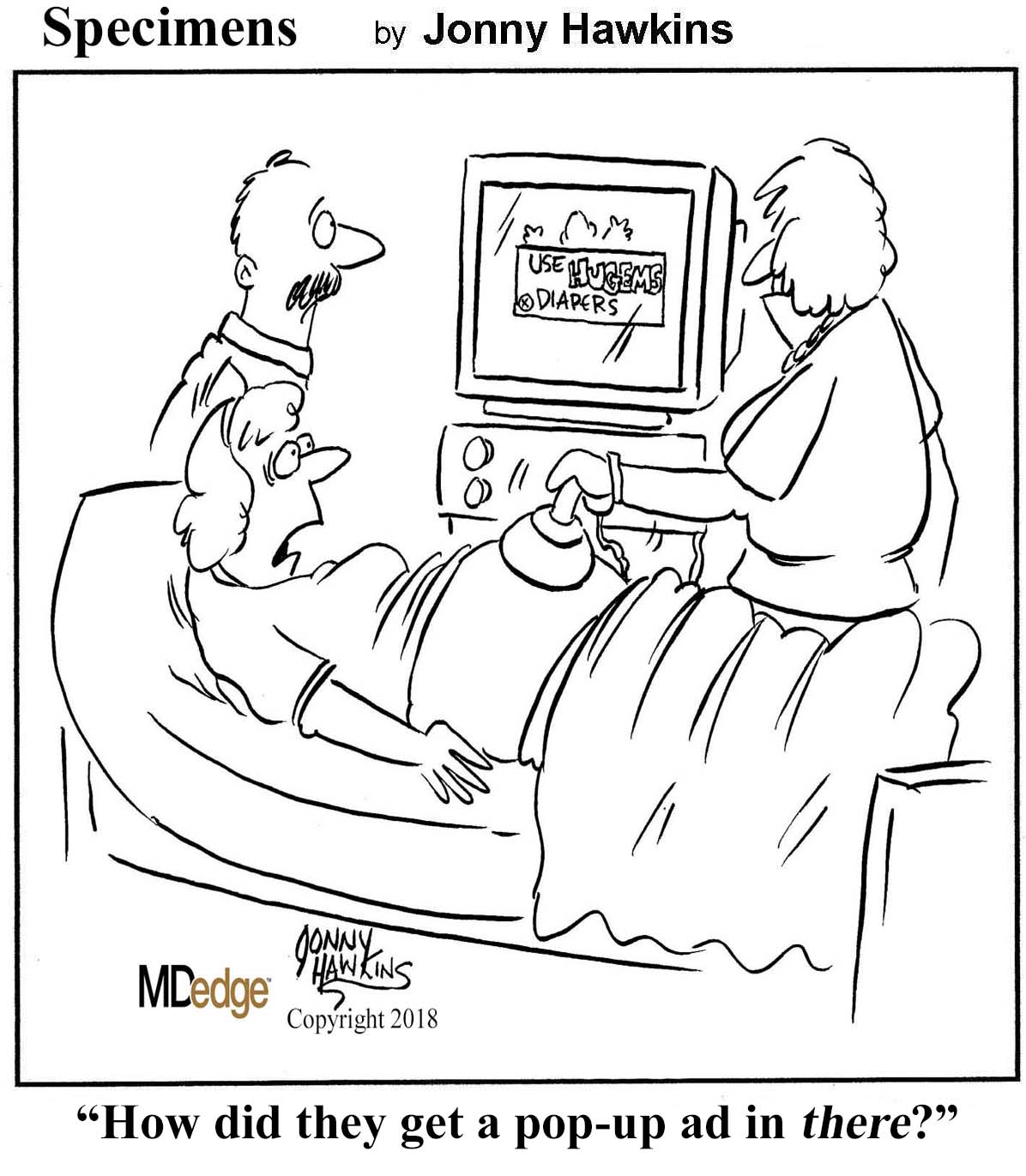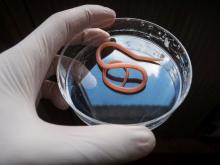User login
Gotta catch ‘em all
In a somewhat unsurprising turn of events, researchers have discovered the exact impact that late-1990s Pokémon obsession had on the human brain. Could Bulbasaur and Charmander really change the way your gray matter works? Pikachu says yes.
Researchers scanned the brains of adults who played Pokémon extensively as children (and possibly as not-children, with the advent of Pokémon Go). They found that, in these adults, the occipitotemporal sulcus region of the brain responded more to images of Pokémon – the original 150, of course – than any other type of image.
The researchers compared this result to “novices” (a.k.a. people who had other hobbies) and noted that novice brains did not have a preference for Pokémon.
Basically, the brain of these experienced players has built them an internal Pokédex, fulfilling the dream of every Pokémaster. Ash Ketchum would be proud.
Hipsters don’t all look the same! (Yes, they do)
Slouchy beanie, scruffy beard, maybe a pair of fake spectacles, and definitely flannel – the uniform of the male hipster. Today’s Beatnik-wannabes all praise nonconformism, but what happens when everyone nonconforms the same?
You get an extremely hilarious threat of lawsuit, that’s what.
The MIT Technology Review published an article about the studies from a mathematician from Brandeis University, who examines how information transmission influences the behavior of a population.
He found that, in general, hipsters in a society initially “act randomly but then undergo a phase transition into a synchronized state.” Despite all their best efforts to push against the mainstream, hipsters eventually sync up with one another and conform to each other.
The article was published with a photo of a man in a beanie, beard, and plaid shirt. The publication soon received an email from a man who claimed he was the person in the photo, and he hadn’t given his consent, and he was upset with the article, calling it a “bit of click-bait about why hipsters all look the same.”
The email-writer angrily threatened legal action … until a quick image check showed that he was not, in fact, the man in the stock photo.
The unnamed hipster slunk away to recover in shame, presumably with organic coffee and a Neutral Milk Hotel album on vinyl.
You don’t need a brain to feel fear
PTSD is normally not a laughing matter. It’s a real mental health disorder, and it deserves to be studied. But somehow, a group of researchers from the Hebrew University of Jerusalem found comedy gold researching the disorder by giving PTSD to ... worms.
Specifically, to Caenorhabditis elegans, a workhorse of biological research. In a study published in Current Biology, the researchers starved their hapless test subjects for a day while spraying them with a scent they normally enjoy. The next day, the worms were fed properly, but when exposed to the same scent, the nematodes went into a defensive mode, showing C. elegans is capable of associative memory.
Because C. elegans only has 302 neurons, it was very simple to find which neurons were affecting their memory and genetically engineer future generations whose “fight or flight” impulse could be activated by switching a light on or off.
Obviously, determining which specific neurons carry associative memory has benefit for the potential treatment of PTSD. We have to wonder though, what do the researchers tell people they do for a living? “Ah, yes, I’m conducting very important research: I make small worms afraid of the light.”
Can’t imagine they get invited to too many parties.
Fly the organ-friendly skies
Much like the proverbial stork, a drone flew 2.8 miles over Baltimore during the early-morning hours of April 19 to deliver a precious cargo.
What? No, it was not a baby! Are you nuts?
This drone was, in fact, the first unmanned aircraft to deliver a human donor organ – in this case, a kidney. This next big step for medicine was taken by the team of Joseph Scalea, MD, of the University of Maryland in Baltimore, one of the surgeons who performed the transplant. In earlier test flights, Dr. Scalea’s team was the first to use a drone to transport medical supplies, such as saline and blood tubes, between the launch site and the helipad at the university medical center.
The custom-made drone “needed to meet the rigid medical, technical, and regulatory demands of carrying an unaccompanied deceased donor organ for human transplant.” It has backup propellers, backup motors, dual batteries, and a parachute recovery system, as well as an organ-tracking system, unlike current methods, according to the university.
Our regular reader (Thanks again, Dr Pepper) may remember that LOTME recently reported on San Francisco’s “Poop Patrol” and suggested that the media would hail it as “Uber, but for poop.” Care to take a guess at what Dr. Scalea called his drone?
That right. “Uber for organs.” Sigh. That’s supposed to be our job. No, wait a second!
Okay, here’s one: “organ droner.”
Gotta catch ‘em all
In a somewhat unsurprising turn of events, researchers have discovered the exact impact that late-1990s Pokémon obsession had on the human brain. Could Bulbasaur and Charmander really change the way your gray matter works? Pikachu says yes.
Researchers scanned the brains of adults who played Pokémon extensively as children (and possibly as not-children, with the advent of Pokémon Go). They found that, in these adults, the occipitotemporal sulcus region of the brain responded more to images of Pokémon – the original 150, of course – than any other type of image.
The researchers compared this result to “novices” (a.k.a. people who had other hobbies) and noted that novice brains did not have a preference for Pokémon.
Basically, the brain of these experienced players has built them an internal Pokédex, fulfilling the dream of every Pokémaster. Ash Ketchum would be proud.
Hipsters don’t all look the same! (Yes, they do)
Slouchy beanie, scruffy beard, maybe a pair of fake spectacles, and definitely flannel – the uniform of the male hipster. Today’s Beatnik-wannabes all praise nonconformism, but what happens when everyone nonconforms the same?
You get an extremely hilarious threat of lawsuit, that’s what.
The MIT Technology Review published an article about the studies from a mathematician from Brandeis University, who examines how information transmission influences the behavior of a population.
He found that, in general, hipsters in a society initially “act randomly but then undergo a phase transition into a synchronized state.” Despite all their best efforts to push against the mainstream, hipsters eventually sync up with one another and conform to each other.
The article was published with a photo of a man in a beanie, beard, and plaid shirt. The publication soon received an email from a man who claimed he was the person in the photo, and he hadn’t given his consent, and he was upset with the article, calling it a “bit of click-bait about why hipsters all look the same.”
The email-writer angrily threatened legal action … until a quick image check showed that he was not, in fact, the man in the stock photo.
The unnamed hipster slunk away to recover in shame, presumably with organic coffee and a Neutral Milk Hotel album on vinyl.
You don’t need a brain to feel fear
PTSD is normally not a laughing matter. It’s a real mental health disorder, and it deserves to be studied. But somehow, a group of researchers from the Hebrew University of Jerusalem found comedy gold researching the disorder by giving PTSD to ... worms.
Specifically, to Caenorhabditis elegans, a workhorse of biological research. In a study published in Current Biology, the researchers starved their hapless test subjects for a day while spraying them with a scent they normally enjoy. The next day, the worms were fed properly, but when exposed to the same scent, the nematodes went into a defensive mode, showing C. elegans is capable of associative memory.
Because C. elegans only has 302 neurons, it was very simple to find which neurons were affecting their memory and genetically engineer future generations whose “fight or flight” impulse could be activated by switching a light on or off.
Obviously, determining which specific neurons carry associative memory has benefit for the potential treatment of PTSD. We have to wonder though, what do the researchers tell people they do for a living? “Ah, yes, I’m conducting very important research: I make small worms afraid of the light.”
Can’t imagine they get invited to too many parties.
Fly the organ-friendly skies
Much like the proverbial stork, a drone flew 2.8 miles over Baltimore during the early-morning hours of April 19 to deliver a precious cargo.
What? No, it was not a baby! Are you nuts?
This drone was, in fact, the first unmanned aircraft to deliver a human donor organ – in this case, a kidney. This next big step for medicine was taken by the team of Joseph Scalea, MD, of the University of Maryland in Baltimore, one of the surgeons who performed the transplant. In earlier test flights, Dr. Scalea’s team was the first to use a drone to transport medical supplies, such as saline and blood tubes, between the launch site and the helipad at the university medical center.
The custom-made drone “needed to meet the rigid medical, technical, and regulatory demands of carrying an unaccompanied deceased donor organ for human transplant.” It has backup propellers, backup motors, dual batteries, and a parachute recovery system, as well as an organ-tracking system, unlike current methods, according to the university.
Our regular reader (Thanks again, Dr Pepper) may remember that LOTME recently reported on San Francisco’s “Poop Patrol” and suggested that the media would hail it as “Uber, but for poop.” Care to take a guess at what Dr. Scalea called his drone?
That right. “Uber for organs.” Sigh. That’s supposed to be our job. No, wait a second!
Okay, here’s one: “organ droner.”
Gotta catch ‘em all
In a somewhat unsurprising turn of events, researchers have discovered the exact impact that late-1990s Pokémon obsession had on the human brain. Could Bulbasaur and Charmander really change the way your gray matter works? Pikachu says yes.
Researchers scanned the brains of adults who played Pokémon extensively as children (and possibly as not-children, with the advent of Pokémon Go). They found that, in these adults, the occipitotemporal sulcus region of the brain responded more to images of Pokémon – the original 150, of course – than any other type of image.
The researchers compared this result to “novices” (a.k.a. people who had other hobbies) and noted that novice brains did not have a preference for Pokémon.
Basically, the brain of these experienced players has built them an internal Pokédex, fulfilling the dream of every Pokémaster. Ash Ketchum would be proud.
Hipsters don’t all look the same! (Yes, they do)
Slouchy beanie, scruffy beard, maybe a pair of fake spectacles, and definitely flannel – the uniform of the male hipster. Today’s Beatnik-wannabes all praise nonconformism, but what happens when everyone nonconforms the same?
You get an extremely hilarious threat of lawsuit, that’s what.
The MIT Technology Review published an article about the studies from a mathematician from Brandeis University, who examines how information transmission influences the behavior of a population.
He found that, in general, hipsters in a society initially “act randomly but then undergo a phase transition into a synchronized state.” Despite all their best efforts to push against the mainstream, hipsters eventually sync up with one another and conform to each other.
The article was published with a photo of a man in a beanie, beard, and plaid shirt. The publication soon received an email from a man who claimed he was the person in the photo, and he hadn’t given his consent, and he was upset with the article, calling it a “bit of click-bait about why hipsters all look the same.”
The email-writer angrily threatened legal action … until a quick image check showed that he was not, in fact, the man in the stock photo.
The unnamed hipster slunk away to recover in shame, presumably with organic coffee and a Neutral Milk Hotel album on vinyl.
You don’t need a brain to feel fear
PTSD is normally not a laughing matter. It’s a real mental health disorder, and it deserves to be studied. But somehow, a group of researchers from the Hebrew University of Jerusalem found comedy gold researching the disorder by giving PTSD to ... worms.
Specifically, to Caenorhabditis elegans, a workhorse of biological research. In a study published in Current Biology, the researchers starved their hapless test subjects for a day while spraying them with a scent they normally enjoy. The next day, the worms were fed properly, but when exposed to the same scent, the nematodes went into a defensive mode, showing C. elegans is capable of associative memory.
Because C. elegans only has 302 neurons, it was very simple to find which neurons were affecting their memory and genetically engineer future generations whose “fight or flight” impulse could be activated by switching a light on or off.
Obviously, determining which specific neurons carry associative memory has benefit for the potential treatment of PTSD. We have to wonder though, what do the researchers tell people they do for a living? “Ah, yes, I’m conducting very important research: I make small worms afraid of the light.”
Can’t imagine they get invited to too many parties.
Fly the organ-friendly skies
Much like the proverbial stork, a drone flew 2.8 miles over Baltimore during the early-morning hours of April 19 to deliver a precious cargo.
What? No, it was not a baby! Are you nuts?
This drone was, in fact, the first unmanned aircraft to deliver a human donor organ – in this case, a kidney. This next big step for medicine was taken by the team of Joseph Scalea, MD, of the University of Maryland in Baltimore, one of the surgeons who performed the transplant. In earlier test flights, Dr. Scalea’s team was the first to use a drone to transport medical supplies, such as saline and blood tubes, between the launch site and the helipad at the university medical center.
The custom-made drone “needed to meet the rigid medical, technical, and regulatory demands of carrying an unaccompanied deceased donor organ for human transplant.” It has backup propellers, backup motors, dual batteries, and a parachute recovery system, as well as an organ-tracking system, unlike current methods, according to the university.
Our regular reader (Thanks again, Dr Pepper) may remember that LOTME recently reported on San Francisco’s “Poop Patrol” and suggested that the media would hail it as “Uber, but for poop.” Care to take a guess at what Dr. Scalea called his drone?
That right. “Uber for organs.” Sigh. That’s supposed to be our job. No, wait a second!
Okay, here’s one: “organ droner.”




